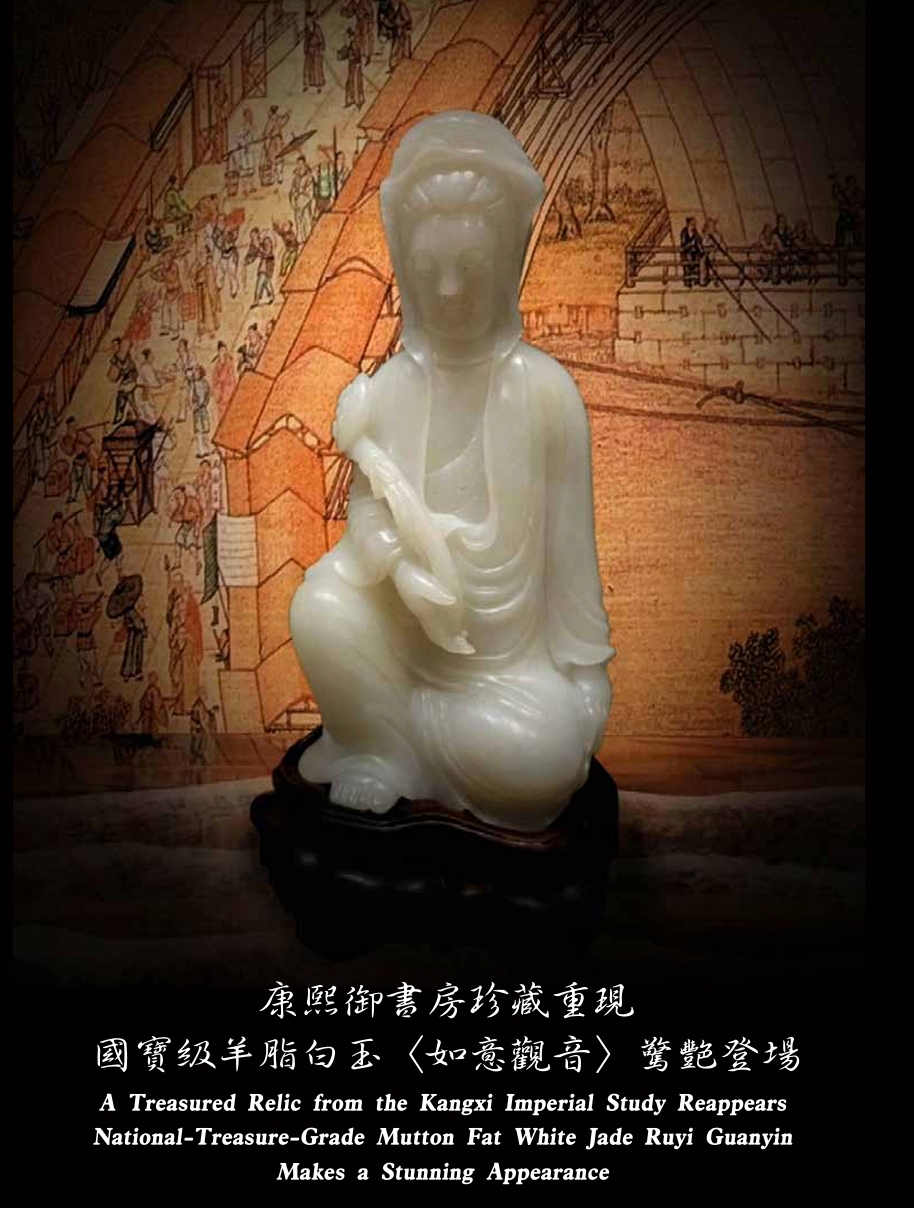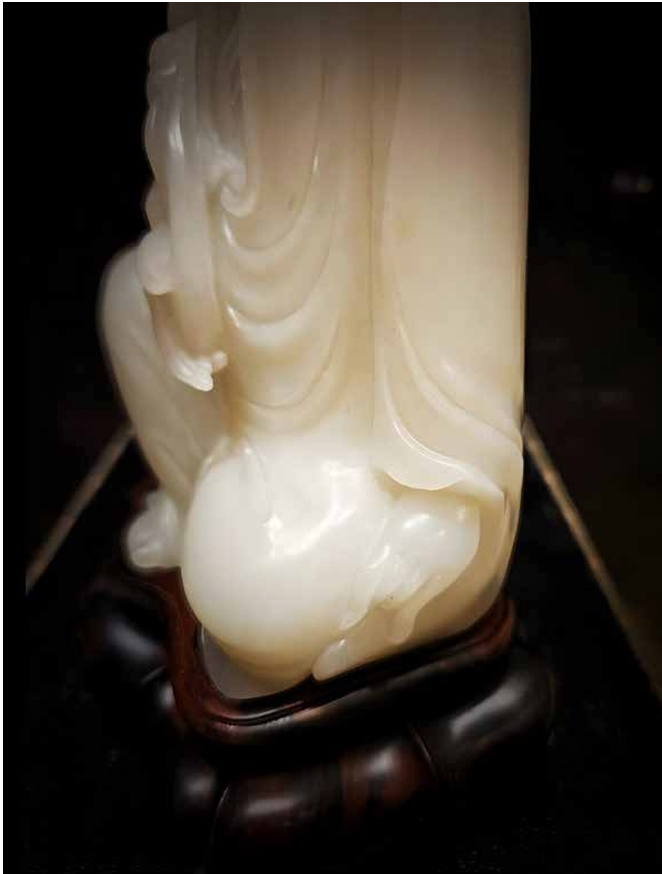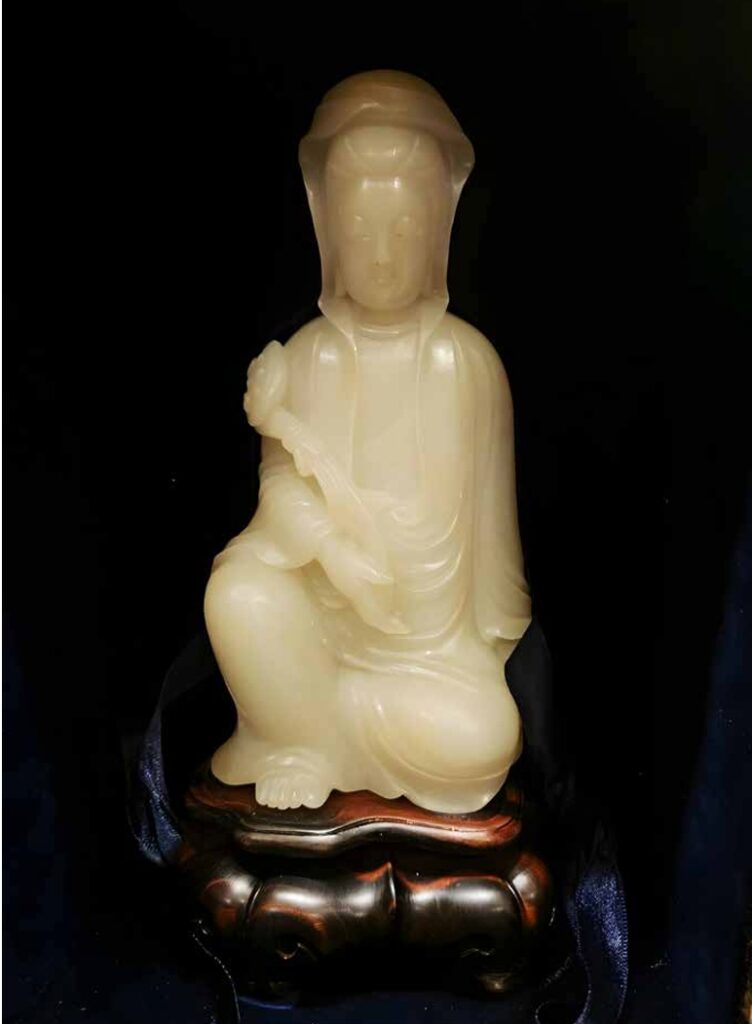A Treasured Relic from the Kangxi Imperial Study Reappears National-Treasure-Grade Mutton Fat White Jade Ruyi Guanyin Makes a Stunning Appearance
Author / Chen YiChong – WGIC and China Light Industry Ministry Certified Jewelry Appraiser, GJA Jadeite Trading Evaluator
Last week, an artist with an impressive collection invited me to view a mysterious antique — an old white jade Guanyin statue.
He carefully lifted the velvet-wrapped silk box lid. Under the soft light, the warm, unctuous jade surface, smooth as congealed fat, emitted a serene glow.
Upon first glance, I was deeply impressed—this is a classic example of Qing Dynasty craftsmanship, with slender proportions and precise, subtle lines. A closer inspection revealed its fine, oily texture with no granular feel, strong translucency, soft and unctuous luster, absence of cracks, black spots, or impurities. The warm, non-chilling touch all place it in the “Mutton Fat White Jade” collection grade, the highest among special grades. “White as congealed fat, lustrous as autumn water” perfectly describes this museum-grade piece.
This Ruyi Guanyin stands approximately seventeen centimeters tall, an extremely rare large object in nephrite jade. The carving is exquisitely executed and flawlessly seamless, the lines gentle yet firm, the expression tranquil and serene. Guanyin’s right hand holds a “Ruyi,” symbolizing the realization of all wishes and perfect fulfillment.
Such a National Palace Museum -grade piece is rumored to date back to the Kangxi reign (1662–1722) and was originally an auspicious object displayed in the Imperial Study. At that time, master craftsmen used the finest jade material, adhering to the strict aesthetic standards of the imperial court, to sculpt this dignified and tranquil sacred image. Through centuries, the jade quality remains pristine white, smooth as congealed fat, its brilliance subtle and reserved.
“The Difference Between Jadeite (Hard Jade) and Nephrite (Soft Jade)” Jadeite’s chemical composition is sodium aluminum silicate (belonging to the Pyroxene group). Nephrite’s chemical composition is calcium magnesium iron amphibole (belonging to the Amphibole group). Therefore, “Hard Jade” and “Soft Jade” are not the same mineral; they are two different families of jade stones.
In terms of internal structure: Jadeite’s granular crystals interweave to produce a vitreous (glassy) luster. Hotan (Hetian) jade’s dense fibrous crystals interweave to produce an oily luster, like fat (greasy luster). Hardness (Mohs): Jadeite is about 6.5–7, Nephrite is about 6–6.5. Specific Gravity: Jadeite is about 3.3–3.5, Nephrite is about 2.9–3.1. Thus, “Hard Jade” is harder, but “Soft Jade” is tougher.
“This article is excerpted from the print special issue Treasured Love Special Issue. For the full content, please purchase through the designated channels.”


